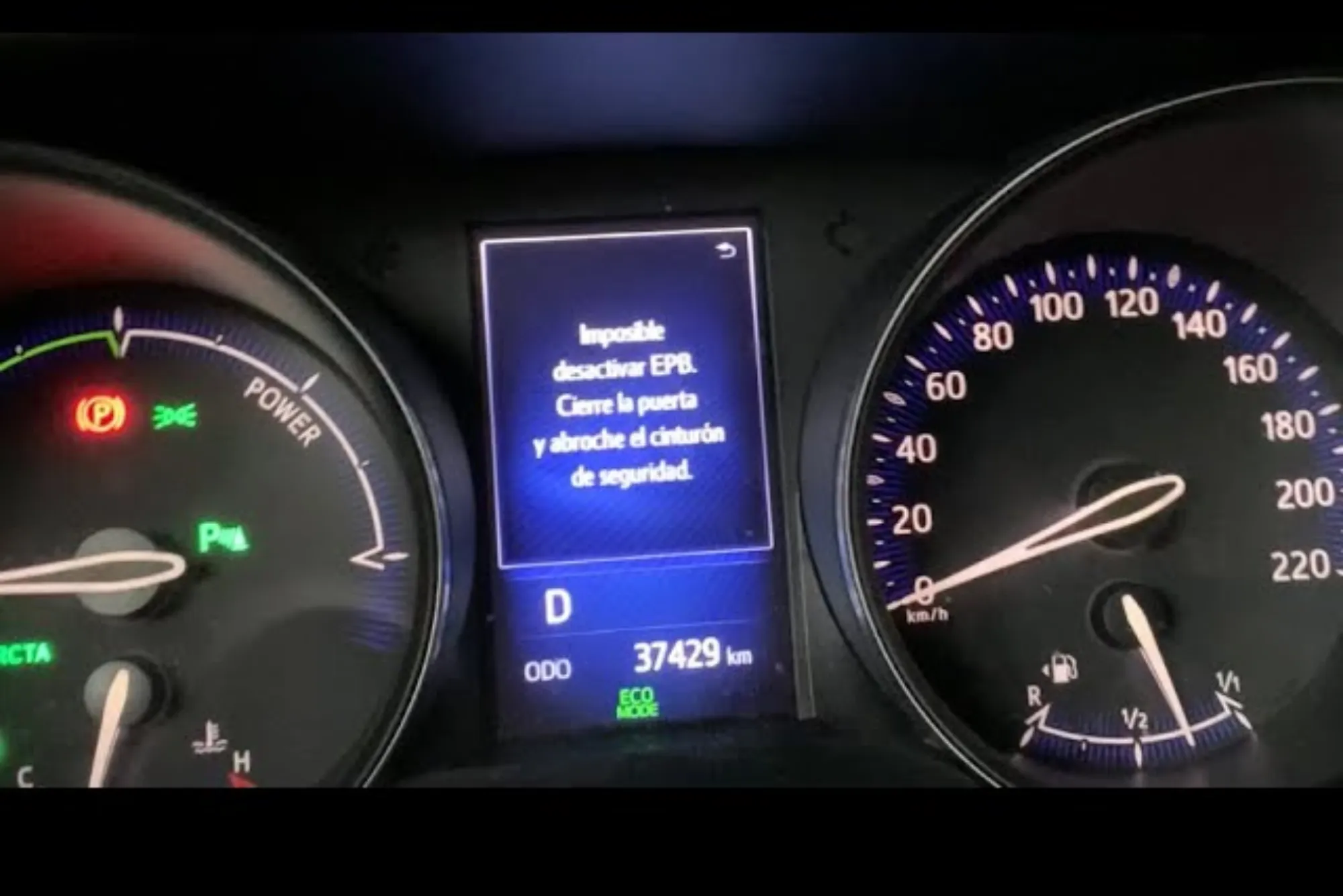The Electronic Parking Brake (EPB) is a modern innovation in vehicle braking systems, designed to improve safety and convenience by automating the parking brake. Toyota and other automakers use EPB systems to replace traditional handbrakes, offering drivers more reliable performance with the press of a button. However, many Toyota owners encounter issues with EPB activation stopping incompletely, which can disrupt vehicle operation and pose safety risks. In this article, we explore the causes, solutions, and preventive measures for this common EPB problem in Toyota vehicles.
Understanding the “EPB Activation Stopped Incompletely” Issue
When Toyota’s EPB activation stops incompletely, the system may trigger a warning message on the dashboard. This issue means that the EPB failed to fully engage or release, leaving the brake system partially activated or disengaged. Some common symptoms include:
- Difficulty releasing the parking brake
- Vehicle rolling when parked
- An inability to activate the EPB
- Warning lights or error messages on the dashboard
An incomplete EPB activation can affect vehicle safety, especially when parking on inclines or in emergency braking situations. Understanding the reasons behind this issue can help Toyota owners take the necessary steps to resolve it.
Causes of Incomplete EPB Activation in Toyota
Low Battery Voltage
Low battery power is a primary reason why EPB activation may stop incompletely. The EPB system depends on consistent electrical input, and if the battery is weak or drained, it may not provide sufficient power for full activation or release.
Electronic Malfunctions
Toyota’s EPB system uses sensors and electronic controls, which are susceptible to glitches or minor software issues. Problems within the control module or faulty sensors can disrupt EPB performance, resulting in incomplete activation.
Mechanical Problems
Mechanical issues within the brake system, such as worn brake calipers or faulty actuators, can interfere with EPB functionality. If brake components are misaligned or damaged, the EPB may not engage or release properly.
Improper EPB Settings
Misconfigurations in the EPB settings, often caused by manual overrides or incorrect calibration, may lead to incomplete activation. Drivers may unknowingly disable certain features, which affects how the EPB operates.
Steps to Diagnose the EPB Activation Issue
Checking Dashboard Warning Lights
EPB-related warning lights or error messages will appear on the dashboard if there’s an issue. Toyota’s dashboard warning symbols provide clues about the specific problem affecting the EPB system.
Battery Health Check
A quick battery health check can reveal if low voltage is causing the problem. If the battery is weak, consider recharging it or replacing it to ensure the EPB system functions as intended.
Brake System Inspection
Examine the brake calipers, cables, and actuators for signs of wear or damage. Worn components may not provide the required force for the EPB, causing it to stop incompletely.
Using a Diagnostic Tool
An OBD2 diagnostic tool can help identify EPB errors. This tool reads the vehicle’s error codes, pinpointing the underlying issue within the EPB system, whether it’s a sensor fault or a software glitch.
Common Solutions to EPB Activation Issues in Toyota
Battery Replacement or Recharge
A simple recharge or replacement of the battery can often resolve EPB activation issues, particularly if low voltage is the root cause. Keeping the battery fully charged ensures adequate power for the EPB system.
Recalibrating the EPB System
Many EPB issues can be resolved by recalibrating the system, which resets the EPB functions. Check the vehicle’s user manual for specific steps, as Toyota models may vary in their recalibration process.
Updating the Vehicle’s Software
Software updates for Toyota vehicles may contain improvements to EPB functionality and bug fixes. Ensure the vehicle’s software is up to date, as outdated versions may contribute to EPB issues.
Mechanical Repairs
If the EPB malfunction is due to damaged components, such as calipers or cables, professional repairs are necessary. A certified technician can assess the condition of these parts and make repairs as needed.
Preventing Future EPB Issues in Toyota
Regular Vehicle Maintenance
Regular maintenance checks are essential for EPB reliability. Keep up with routine inspections of both the braking system and the vehicle’s battery to avoid unexpected issues.
Avoiding Excessive Strain on the EPB System
Proper use of the EPB can help extend its lifespan. Avoid repeatedly engaging and disengaging the EPB unnecessarily, as this can strain the system and lead to early wear.
Staying Informed on Toyota Service Bulletins
Toyota periodically releases technical service bulletins (TSBs) with guidance on vehicle issues, including the EPB. Staying updated on these TSBs helps ensure that Toyota owners are informed about recommended practices or fixes for EPB performance.
When to Seek Professional Assistance
If troubleshooting steps don’t resolve the incomplete activation issue, it’s essential to seek professional help. Signs that it’s time for a service visit include:
- Persistent warning messages on the dashboard
- Ongoing issues with EPB activation or release
- Unusual noises or grinding from the brakes
Certified Toyota technicians have the expertise and diagnostic tools to address EPB malfunctions safely and efficiently.
The Electronic Parking Brake (EPB) is a valuable safety feature in Toyota vehicles, but it’s crucial to address any activation issues promptly. Understanding the causes and solutions for incomplete EPB activation empowers Toyota owners to troubleshoot the problem, maintain safe operation, and avoid costly repairs. By following the preventive tips outlined here, you can help ensure your EPB functions smoothly, offering you peace of mind every time you park your vehicle.




